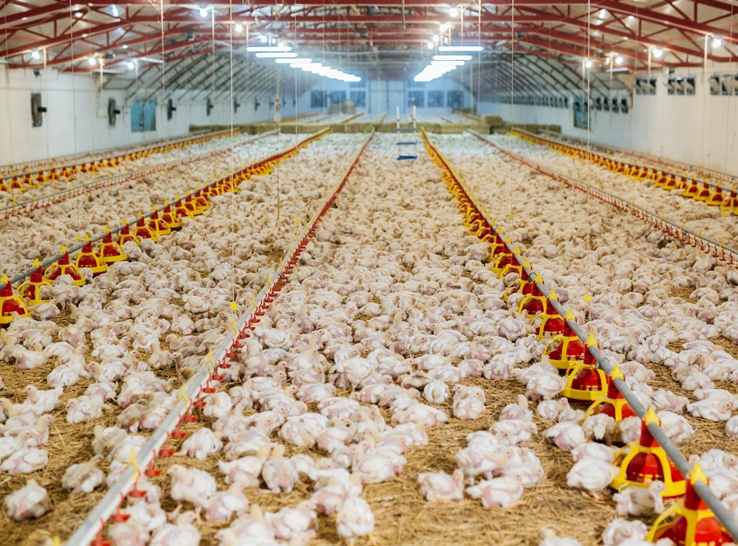Pathogenic Enterococcus cecorum is proving to be a growing problem on broiler farms, and infection extends beyond bird-to-bird contact to the farm environment, according to a study led by Martine Boulianne, DMV, PhD, DACPV, at the University of Montreal.
The bacterium is often isolated in cases of osteomyelitis, as well as arthritis and polyserositis. Once E. cecorum enters a poultry house, it tends to spread across the same premises and become a recurring source of disease.
The researchers sought a deeper understanding of the sources of infection and the transmission of E. cecorum by extensively sampling three farms that veterinarians had identified as having E. cecorum infections.
They collected samples from healthy and sick birds, as well as biofilms from water lines, dust, fecal samples and insects. Next, they grew bacterial cultures in a lab and isolated E. cecorum from samples.
The researchers then used real-time PCR testing to identify the gene cpsO, which is associated with virulence in E. cecorum, and genome sequencing to establish the relationships between the strains found.
A ubiquitous threat
The bacterium was found “everywhere,” Boulianne told an audience at the 2025 American Association of Avian Pathologists Annual Meeting. However, the prevalence and counts of cpsO-positive E. cecorum were higher in dust from exhaust fans and in the birds’ droppings. It was less prevalent in the water line biofilms and bird organs.
Genetic sequencing revealed persistence of cpsO-positive strains. In one flock, they found the same strains in dust and the ceca of healthy birds. In another flock, they observed a connection between dust and the ceca of diseased birds.
“It’s likely that dust is a reservoir, so we have to pay attention to the cleaning and disinfection process,” Boulianne said.
They also found identical strains between both healthy and sick birds and darkling beetles, which had been washed three times and cut into small pieces to ensure that they were not contaminated with dust.
“We’re pretty sure that the dust that could have been on the darkling beetles was removed properly and that they are indeed a vector of E. cecorum,” she noted, suggesting that beetles and flies may also contribute to environmental persistence of the bacterium on farms.
Biosecurity focus
“There appears to be a widespread presence of pathogenic E. cecorum strains on diseased poultry farms. The infection in chickens likely extends beyond direct bird-to-bird contact, involving indirect contact with the farm environment, whether with dust, insects or droppings,” she concluded.
Along with a renewed focus on cleaning processes, she advocated insect-control measures as part of mitigation strategies for E. cecorum.






